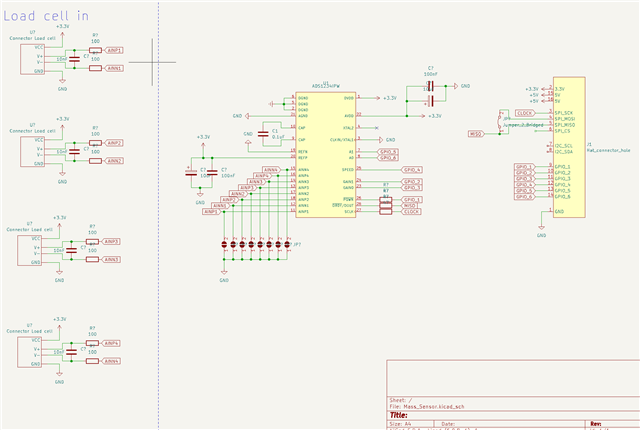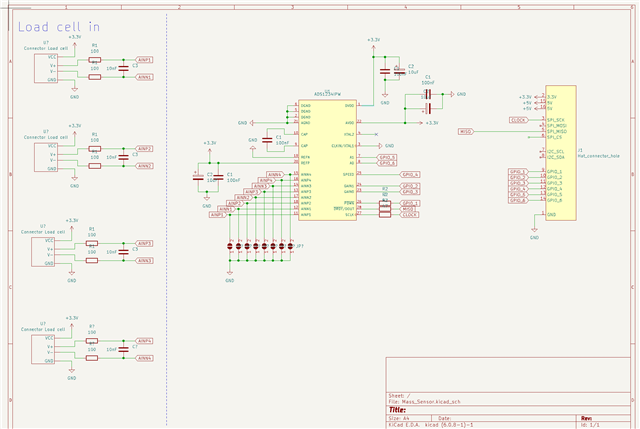Other Parts Discussed in Thread: ADS1232
Hi guys !
I am studying electrical engineering in second year and for a university project I want to connect 4 loads cells to the main board. Since I want 4 inputs, I decide to use ADS1234. The ADC seems to be compatible with SPI but, as far as I understand the point of SPI, the name of the pins of the ADS1234 are note the sam as "normal SPI's pin" and I don't really know how to connect the ADC. I try this but I don't know if it is correct...
Here is my schematic for the moment, do not hesitate if you have any advice or modifications !!
Thanks a lot.
Sorry for my English



